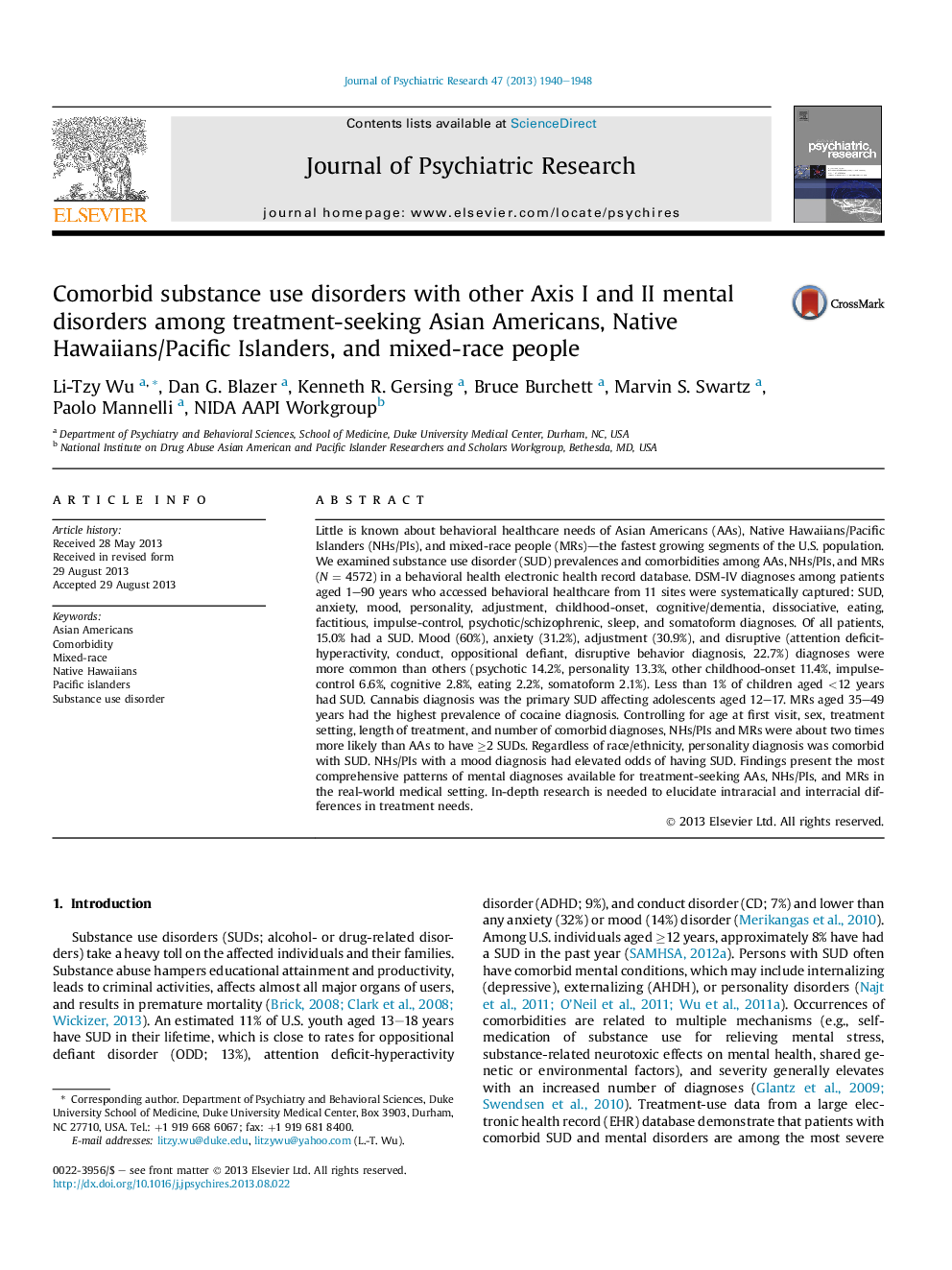| Article ID | Journal | Published Year | Pages | File Type |
|---|---|---|---|---|
| 10301894 | Journal of Psychiatric Research | 2013 | 9 Pages |
Abstract
Little is known about behavioral healthcare needs of Asian Americans (AAs), Native Hawaiians/Pacific Islanders (NHs/PIs), and mixed-race people (MRs)-the fastest growing segments of the U.S. population. We examined substance use disorder (SUD) prevalences and comorbidities among AAs, NHs/PIs, and MRs (N = 4572) in a behavioral health electronic health record database. DSM-IV diagnoses among patients aged 1-90 years who accessed behavioral healthcare from 11 sites were systematically captured: SUD, anxiety, mood, personality, adjustment, childhood-onset, cognitive/dementia, dissociative, eating, factitious, impulse-control, psychotic/schizophrenic, sleep, and somatoform diagnoses. Of all patients, 15.0% had a SUD. Mood (60%), anxiety (31.2%), adjustment (30.9%), and disruptive (attention deficit-hyperactivity, conduct, oppositional defiant, disruptive behavior diagnosis, 22.7%) diagnoses were more common than others (psychotic 14.2%, personality 13.3%, other childhood-onset 11.4%, impulse-control 6.6%, cognitive 2.8%, eating 2.2%, somatoform 2.1%). Less than 1% of children aged <12 years had SUD. Cannabis diagnosis was the primary SUD affecting adolescents aged 12-17. MRs aged 35-49 years had the highest prevalence of cocaine diagnosis. Controlling for age at first visit, sex, treatment setting, length of treatment, and number of comorbid diagnoses, NHs/PIs and MRs were about two times more likely than AAs to have â¥2 SUDs. Regardless of race/ethnicity, personality diagnosis was comorbid with SUD. NHs/PIs with a mood diagnosis had elevated odds of having SUD. Findings present the most comprehensive patterns of mental diagnoses available for treatment-seeking AAs, NHs/PIs, and MRs in the real-world medical setting. In-depth research is needed to elucidate intraracial and interracial differences in treatment needs.
Keywords
Related Topics
Life Sciences
Neuroscience
Biological Psychiatry
Authors
Li-Tzy Wu, Dan G. Blazer, Kenneth R. Gersing, Bruce Burchett, Marvin S. Swartz, Paolo Mannelli, NIDA AAPI Workgroup NIDA AAPI Workgroup,
